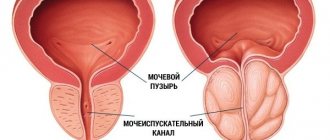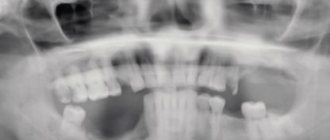Myeloid leukemia is a malignant disease of the bone marrow and blood. With it, an excessive number of granulocytes (basophils, neutrophils and eosinophils), as well as their precursors, begin to form in the patient’s body. Granulocytes are a type of white blood cell responsible for protecting the body from various infections. However, with myeloid leukemia, they stop performing their functions and begin to displace normal blood cells from the bone marrow and blood, as well as enter other organs, thereby disrupting their function.
There are many types of myeloid leukemia, which differ in the speed of development of the pathological process, changes in chromosomes, and the maturity of leukemia cells. As a rule, experts distinguish two main types of this disease:
- chronic myeloid leukemia (CML);
- acute myeloblastic leukemia.
With absolutely any type of myeloid leukemia, the patient needs long-term and complex treatment. Every year, specialists develop more and more effective methods that allow effective therapy for this type of blood cancer. Moreover, the prognosis of the disease directly depends on its type, the stage at which the patient began treatment, as well as his age. As a rule, the prognosis for acute myeloid leukemia is favorable (especially when it comes to children). The prognosis for chronic myeloid leukemia is generally worse, but if treatment is started in a timely manner, it is quite possible to stop the development of the pathological process for a long time using modern methods of therapy.
The bone marrow in myeloid leukemia begins to produce an excessive amount of pathological granulocytes, which can gradually displace normal blood cells from the bone marrow and blood, thereby causing characteristic symptoms. When the growth and division of red blood cells are suppressed, the patient exhibits symptoms of anemia (weakness, dizziness, pallor). If platelet growth is suppressed, the patient begins to suffer from frequent bleeding and bleeding disorders. Leukemia cells are also able to enter other organs (spinal cord, brain, liver, lymph nodes and spleen), thereby provoking characteristic manifestations and disruption of their functions. In addition, pathological myeloid cells can accumulate in the gastrointestinal tract, mediastinum and periosteum.
Due to the fact that the DNA of myeloid cells is damaged, malignant hematopoietic disorders begin. It is the DNA of cells that contains the necessary information about their growth, death and division (it is presented in the cell in chromosomal form). Even now, experts have not been able to fully study the factors that damage the DNA of myeloid cells. It has been proven that toxic substances (for example, benzene), as well as ionizing radiation that precedes chemotherapy, have a harmful effect on them. With certain types of myeloid leukemia, characteristic changes in the structure of chromosomes and their number are also observed.
Acute myeloid leukemia can occur in both children and adults. It is characterized by an increase in the number of myeloblasts in the blood and bone marrow. The average age of patients suffering from chronic myeloid leukemia is 55-60 years.
Causes of chronic myeloid leukemia
The development of the disease can be triggered by genetic and non-genetic factors. In the first case, experts talk about the so-called Philadelphia chromosome, which is formed as a result of translocation of the region carrying the ABL1 gene from the 9th to the 22nd chromosome. The Philadelphia chromosome is detected not only in chronic myeloid leukemia, but also in some other types of leukemia.
Non-genetic factors include various types of influences that affect the process of cell division in the bone marrow. They can be ionizing radiation, certain groups of drugs, in particular cytostatics, etc.
Who is at risk?
- Men.
- People over 60 years of age.
- People who smoke.
- People who have had radiation therapy or chemotherapy (this happens with other forms of cancer).
- People who have been exposed to radioactive radiation.
- People suffering from Down syndrome and other genetic disorders.
- People who suffer from myelodysplastic diseases (this is the name of a group of chronic diseases in which the bone marrow stops producing a sufficient number of full-fledged blood cells).
Stages of chronic myeloid leukemia
According to clinical manifestations and taking into account laboratory parameters, the course of chronic myeloid leukemia can be divided into three stages:
- Chronic - characterized by a mild clinical picture, possibly a complete absence of any manifestations. Typically, patients complain of mild weakness, fatigue and other general symptoms that cannot be associated with the development of chronic myeloid leukemia. The duration is several years. Most new cases of the disease are detected in the chronic stage, often accidentally during a routine examination.
- The acceleration stage is accompanied by the release of pathological cells into the blood with the development of thrombocytopenia or thrombocytosis, leukocytosis, an increase in the number of basophils, and the appearance of single blast cells. Symptoms become more pronounced. Patients complain of causeless hemorrhages on the skin, severe fatigue, and headaches. During the examination, an enlargement of the spleen and liver is noted.
- The final stage of chronic myeloid leukemia is called blast crisis. Serious changes are noted in the cellular composition of the blood, the normal process of hematopoiesis is almost completely inhibited, anemia and thrombocytopenia develop, and the percentage of blast cells increases significantly. Against the background of such changes, massive bleeding may develop, and a secondary infection may occur. Patients quickly lose weight, lose appetite, and their general condition deteriorates greatly.
The prognosis after treatment begins largely depends on the stage of chronic myeloid leukemia. If the disease is detected at the initial stage, then properly selected therapy can achieve long-term remission. At other stages, the effectiveness of treatment decreases.
Diagnostic methods
The development of chronic myeloid leukemia can be suspected based on a routine blood test, but this is not enough to make an accurate diagnosis and differential diagnosis. Additionally, a bone marrow puncture is prescribed, followed by a morphological assessment, but the determination of the Philadelphia chromosome is crucial. For an accurate diagnosis of chronic myeloid leukemia, a cytogenetic study of a bone marrow biopsy, fluorescence in situ hybridization, or a reverse transcription-PCR method is required. Medical genetics has everything necessary to solve these problems.
What is CML and how to fight it
Oncohematologist Mikhail Fominykh about chronic myeloid leukemia
Mikhail Fominykh is a researcher at the Russian Research Institute of Hematology and Transfusiology, St. Petersburg. A practicing oncohematologist who devoted his scientific activity to chronic myeloid leukemia, and defended his dissertation on this topic in 2021. During the discussion, he revealed the main symptoms of CML, talked about risk areas and restrictions, and also explained whether it is possible to give birth to a healthy child with this diagnosis.
What are the main symptoms of CML?
Often the person himself is not particularly worried about anything. Very often, a patient comes to us from another specialist: a therapist or a surgeon. People undergo routine tests and find out that they have an increased number of white blood cells. Having detected elevated leukocytes, the therapist or surgeon refers the patient to a hematologist.
If we talk about symptoms, it may be increased fatigue, sweating, unmotivated rises in body temperature to 38 without obvious signs of infection, heaviness in the left hypochondrium due to the fact that the spleen increases in size. If you monitor your health and get tested every year, chronic myeloid leukemia can be detected at an early stage. Today, 95% of CML cases are diagnosed in the chronic phase and only 5% in advanced, advanced phases. These are the acceleration and blast crisis phases, when symptoms of tumor intoxication begin to appear.
The most striking symptom of the early stage of CML is unmotivated weight loss within six months. If you are not on a diet and are not working on losing weight, but are losing kilograms, and in addition to this, there is increased sweating and a temperature above 38 - this is a reason to be wary and go get tested.
CML in the “advanced” stage is manifested by weakness and increased fatigue due to anemia, increased bleeding from the gums or nose, and bruising may occur. In principle, these symptoms are characteristic of all hematological diseases that are associated with damage to the bone marrow.
How elevated should white blood cells be to suspect CML?
Today, the norm of leukocytes is from 4 to 9 per ten to the ninth power per liter. But you need to understand that these numbers depend on many factors: previous infection, surgery. Just based on the number of leukocytes, no one will say that you have leukemia - in any case, additional examination will be necessary. If increased leukocytosis 10-11 appears once, this is not a reason to run to a hematologist, since this may be a completely normal reaction of the body to a viral or bacterial infection. But if leukocytosis above 15 is observed within three months, then this is a reason to consult a hematologist. We recommend monitoring your blood counts and taking tests at least once a year in order to identify a malfunction in time and begin treatment, if necessary.
Is it possible to say that someone is at risk? Is there a predisposition? Does the environment have an impact?
Heredity plays absolutely no role here. If parents had CML, then it is far from a fact that their children will have it: the hereditary theory has not yet been confirmed. The same applies to all other existing theories: viral, bacterial.
Not long ago there was a terrible story when children with leukemia were evicted from their apartments because the residents of the house believed that cancer could be transmitted by airborne droplets. This, of course, is not true: cancer is not transmitted in this way. If oncological diseases were transmitted by airborne droplets, then I and other oncologists would probably already have died: I saw my first oncological patient in my third year, over 15 years of practice I have seen thousands of them and, fortunately, I am still alive, I am healthy and have no cancer diagnosis.
After exposure to ionizing radiation, the risk does increase: after Chernobyl, Hiroshima and Nagasaki, there was a surge in the development of acute leukemia. This is a confirmed fact, but heredity has no effect on the occurrence of leukemia. Other theories have not yet been confirmed either. Doctors, unfortunately, have not yet identified the cause.
Can we say that CML is an accident, like a brick on your head?
Yes, that's exactly it. I am sitting in front of you now, and you are sitting in front of your gadgets, and a certain number of mutations are happening inside each organism right at this time. This happens while we sleep, eat, or walk down the street. As long as our immune system copes with emerging mutations, everything is fine. When a failure occurs and the system can no longer cope, a tumor process begins to develop. In the case of hematological diseases, a mutation of one cell is enough for this. And it really is like a brick to your head. Chronic leukemia occurs spontaneously; we cannot predict it.
How is treatment for CML constructed?
Imatinib is prescribed in the first line of therapy. If before 1999, after diagnosis, patients lived for 3-4 years, today we can talk about 20-year survival. Patients with CML continue to live a full, quiet life and die just like their peers from cardiovascular diseases, diabetes, and so on. Treatment with Imatinib occurs on an outpatient basis. The patient receives the drug at the pharmacy, takes it at home and lives, in general, like a completely ordinary person. In addition to Imatinib, there are second and third generation drugs. And even on the fourth, they are still undergoing clinical trials.
Is it possible to get pregnant with CML?
When treating with new drugs that are undergoing clinical trials, contraception must be used because we do not yet know how these new drugs may affect the fetus. In the case of already well-known ones, it is necessary to make a decision together with the attending physician, hematologist and gynecologist managing the pregnancy. For example, Ekaterina Yuryevna Chelysheva, who works at the National Medical Research Center for Hematology, has vast experience and a large register of patients with chronic myeloid leukemia who became pregnant and gave birth to healthy children. If the situation allows you to safely discontinue therapy for the period of conception and at least the first trimester, monthly monitoring is necessary. If we see that the molecular response is lost, then for vital indications the therapy will have to be returned.
Unfortunately, complete cancellation is not happening as quickly as we would like. In the case of first-generation tyrosine kinase inhibitors, it takes a little longer. With the second generation - a little earlier: approximately three to five years of constant use. We achieve a molecular response, cancel therapy, and there you go. We are lifting restrictions regarding pregnancy and, in general, most restrictions. This is an ordinary recovered person cured of cancer. It is possible to get pregnant. The only thing that is required is constant monitoring by a hematologist.
Treatment with drugs of the second and subsequent generations allows one to preserve reproductive functions, although previously this seemed nonsense. Now even recommendations for the treatment of cancer recommend discussing their reproductive plans with patients, and only after that prescribing the drug. Today there are drugs that do not have such a strong effect on fertility, and a woman still has the opportunity to become pregnant and bear a healthy child. Nowadays, preservation of reproductive functions is the norm and one of the goals in the treatment of patients with CML. Isn't this happiness?
Are there any restrictions that CML imposes or are there none? What is life like with CML and after CML if we achieve complete remission and stop drug treatment?
I say so rosyly that everyone has won, everyone has won, but to achieve this, close cooperation between the attending physician and the patient himself is necessary. Any changes in life must be discussed with your doctor; you cannot make decisions on your own - only after consultation with your doctor.
The only strict restriction that really exists is the consumption of grapefruit juice. This is strictly prohibited. To put it simply, grapefruit juice interferes with the absorption of drugs with tyrosine kinase inhibitors, and they become ineffective: that is, you take the drug, but it does not work as it should. There are also a number of drugs that can enhance or decrease the effect of drugs, so before starting treatment with a hematologist, you must inform your hematologist about all the medications that you take on a regular basis. If the duration of taking the drugs does not exceed a week, then this does not affect anything, but if therapy is prescribed on an ongoing basis, then a conflict may arise. This is especially true for antihypertensive drugs to normalize blood pressure.
If we talk about sports, then you can gradually return to it after everything - the size of the spleen, blood tests, general well-being - returns to normal. Moderate physical activity is welcome. Our colleagues from the USA recently conducted studies that proved that yoga, breathing exercises, and qigong have a positive effect on the quality of life of patients with myeloproliferative diseases.
Is it possible to go to the sea and undergo sanatorium-resort treatment?
This question is not completely clear. Previously, every cancer diagnosis put an end to any physiotherapy, any sanatorium-resort treatment. Now the only thing I forbid everyone, and not only my patients, but also healthy healthy people, is to avoid increased exposure to sunlight. Swim in the sea as much as you like, but you should protect yourself from the sun. And now we are talking not only about those who are in remission, but also about those who are under treatment and taking medications. If you feel well, your blood test is normal, then the sea is welcome. But active sun should be avoided - this has a detrimental effect on everyone without exception. Increased exposure to sunlight and ultraviolet radiation increases the risk of developing melanoma. This has been proven.
Can CML be completely cured?
Chronic myeloid leukemia is a disease you can live with, and we teach it. There are schools for diabetics, schools for patients with arterial hypertension, and now we run schools for patients with chronic myeloid leukemia: we give lectures, advise patients, educate them so that they know more about the disease than we do. If you have CML, you need to monitor your condition and take control tests every six months. Currently, worldwide research is being conducted on the possibility of completely canceling therapy. In approximately half of patients, therapy is discontinued. In the other half of cases, during the first six months, unfortunately, you have to return to therapy because a relapse occurs. Everything is very individual.
Share this post with your friends:
4. Treatment of the disease
Treatment of chronic myeloid leukemia is selected individually for each patient, and generally depends on the patient’s age, the phase of chronic myeloid leukemia, general health and the size of the spleen at the time of diagnosis.
Depending on the phase, treatment for chronic myeloid leukemia may include
:
- Chronic phase of chronic myeloid leukemia
- targeted therapy with a tyrosine kinase inhibitor; high doses of chemotherapy with donor stem cell transplantation; biological therapy (interferon) with or without chemotherapy; chemotherapy; splenectomy; - Accelerated stage-by-stage chronic myeloid leukemia
– transplantation of donor stem cells; targeted therapy with a tyrosine kinase inhibitor; tyrosine kinase inhibitor therapy followed by transplantation of donor stem cells; biological therapy (interferon with or without chemotherapy; high-dose chemotherapy; chemotherapy; transfusion of blood or blood components to replace white or red blood cells to relieve symptoms of the disease; - Blaster phase of chronic myeloid leukemia
- targeted therapy with a tyrosine kinase inhibitor; chemotherapy using one or more drugs; high doses of chemotherapy; transplantation of donor stem cells; chemotherapy as palliative treatment to relieve symptoms of the disease; - Relapse of chronic myeloid leukemia
- targeted therapy with a tyrosine kinase inhibitor; donor stem cell transplantation; donor lymphocytes; biological therapy with interferon.









